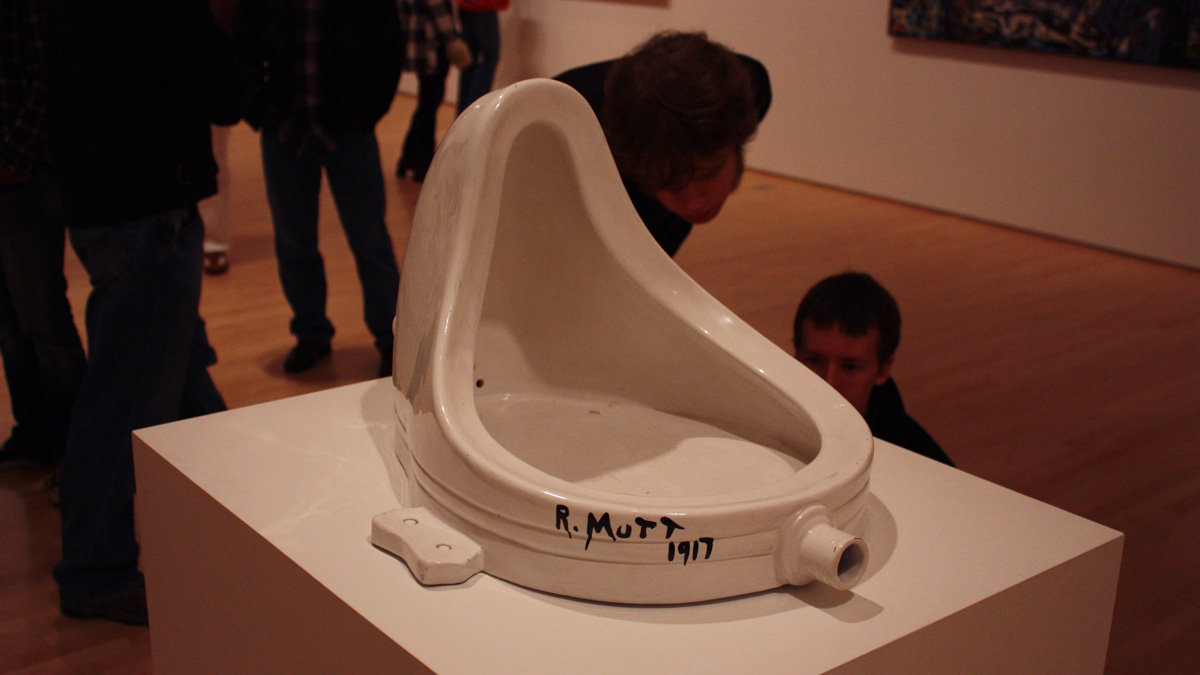Duchamp and the Anniversary of the Death of Art
 Gary Stevens
Gary StevensOn April 9, 1917, just over 100 years ago, Marcel Duchamp achieved what was arguably the most shattering critique of art the world had ever seen.
The story is legendary. The Society of Independent Artists’ salon in New York claimed that they would accept any work of art, so long as the artist paid the application fee. In response to this criterion, Duchamp submitted an upside-down urinal titled “Fountain.” The Society’s board, faced with what they believed was a practical joke, rejected Fountain because it was not “a true work of art.” Duchamp resigned from the board in protest.
The purpose of Duchamp’s work was to prove that anyone can be an artist and anything can be art, so long as you proclaim it as such. Yet while some may argue that Duchamp made art in the modern era less elitist and more democratic, fine arts students should not look to him as a revolutionary. Instead, they should regard him as someone who fundamentally undermined centuries of aesthetic theory and legitimized a movement that cares little about creating meaningful art.
Art has always been accessible to the masses. Since its inception, the purpose of art has been to convey a specific meaning to diverse audiences, regardless of whether they were educated or not. In ancient Greece, for example, just 10 per cent of the population were literate. The process of socializing society therefore fell on the shoulders of artists like Phidias, Praxiteles, and Lysippus, whose nude statues were depersonalized, de-sexed bodies that carried symbolic didactic meaning.
For most of history, artists have been discouraged against creating decoration for its own sake. In 1573, Veronese was tried for heresy for confusing ordinary citizens by creating too many distractions in his painting The Feast at the House of Levi. According to the Catholic Church, Veronese’s work could hardly be considered art at all, simply because it could not be easily determined what the subject matter was.
By the mid-1800’s, art was beginning to be read more literally. The subject matter was either overtly political, as in the case of realists like Jean-Francois Millet, or it was simply an illustration of earthly beauty, as in the case of impressionists like Monet and Renoir. At this point, however, it still carried some intellectual value.
Fountain, however, ushered in a new era of art that broke all previous conventions. The very purpose of this piece was that it had no purpose: although it’s possible to admire the aesthetics of this porcelain appliance, the artwork is not a special object, it does not create a unique experience for viewers, and the artist himself was not a great creator. In the words of philosopher Stephen Hicks, Duchamp’s work demonstrated that “art is something you piss on.”
It’s easy to see that fine arts majors continue to take inspiration from Duchamp. It’s hard to imagine that a walk through the rusty, dilapidated steel sculptures in the FAB courtyard would evoke any real emotion or convey any real message to its audience. Although these students claim to create art that rejects elitism, their work either carries no meaning or is so confusing that only a gallery curator or art history professor could find value in it.
Duchamp’s Fountain made art a joke. If fine arts students diverged from Duchamp’s precedent and prioritized meaning over surface qualities, perhaps we could return to a time when society turned to art for political, cultural, or spiritual instruction, rather than criticizing it mercilessly for being costly and useless.
UPDATE: At 10:33 a.m. on September 25, 2024, the name of the author of this post was removed due to safety concerns. The Gateway appreciates your understanding.




